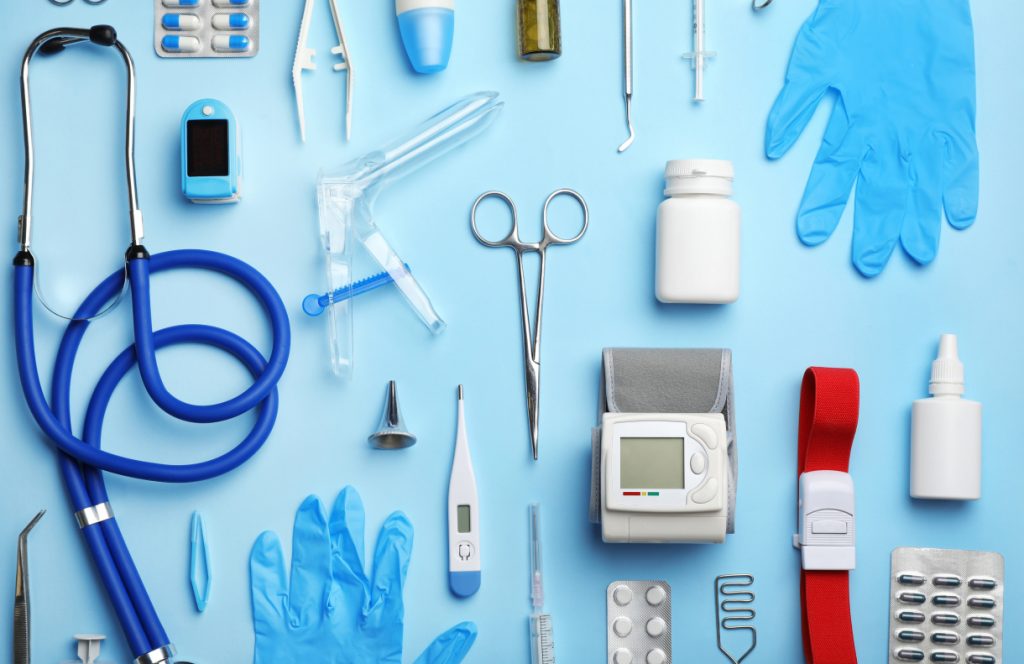A Class 1 medical device is a type of medical device that poses a minimal potential for harm to the user and is generally considered to be low-risk.Class 1 medical devices include a wide range of products, such as bandages, crutches, elastic bandages, and orthopedic shoes. These devices are typically used for diagnosing, treating, or preventing a disease or medical condition and are intended to have minimal impact on the body.

Table of Contents
Approval Process of Class 1 Medical devices in the United States and Europe
One of the main characteristics of Class 1 medical devices is that they do not require premarket review or clearance by the FDA. This means that manufacturers of these devices do not need to submit data to the FDA demonstrating the safety and effectiveness of their products before they can be sold to the public.
These devices are regulated by the Food and Drug Administration (FDA) in the United States and are classified based on the level of risk they pose to the user. Therefore, manufacturers must prove compliance with all applicable MDR standards if they want to market Class I medical devices in Europe.
The manufacturers of Class 1 medical devices are still required to follow certain regulatory requirements, such as good manufacturing practices (GMPs) and quality system regulations (QSRs). These requirements help to ensure that the devices are safe and effective for their intended use.

While Class 1 medical devices pose minimal risk to the user, it is important to remember that all medical devices, regardless of their classification, have the potential to cause harm if used incorrectly. Therefore, following the manufacturer’s instructions and seeking medical advice when using any medical device is important. The FDA has established specific guidelines for the manufacturing and distributing class 1 medical devices. These guidelines ensure that the devices are safe and effective for their intended use. The process for obtaining FDA approval for a class 1 medical device begins with the submission of a premarket notification, also known as a 510(k). This notification includes information about the device, including its intended use, design, and any intended changes from similar devices already on the market. Once the 510(k) has been reviewed and approved by the FDA, the manufacturer is then able to begin marketing and distributing the device. However, the FDA continues to monitor the device for any potential risks or issues and may require additional testing or regulatory action if necessary. One of the main benefits of class 1 medical devices is that they are generally easier and quicker to bring to market than higher-risk devices. This allows manufacturers to bring new products to the market more quickly, which can ultimately benefit patients by providing them with access to newer and potentially more effective treatments. However, it is important to note that even class 1 medical devices can pose risks to patients if they are not used properly or are defective. Therefore, manufacturers must report any adverse events or issues with their devices to the FDA, which can then take regulatory action if necessary. Overall, class 1 medical devices play a crucial role in the healthcare industry, providing low-risk treatments and procedures to patients. The FDA’s regulatory guidelines help ensure that these devices are safe and effective while allowing manufacturers to promptly bring new products to market.
Also read:What is a Medical Device?
Approval Process of Class 1 Medical devices in China
The approval process for Class 1 medical devices in China involves obtaining a Medical Device Product Registration Certificate issued by the National Medical Products Administration (NMPA) (formerly the China Food and Drug Administration (CFDA). The process includes submitting a registration application, testing and inspecting the device, and review of technical documentation. The process can take several months to complete. Additionally, medical device manufacturers must also register their establishments with the NMPA and comply with relevant regulations such as Good Manufacturing Practice (GMP) standards.
How Can RegDesk Help?
RegDesk is a holistic Regulatory Information Management System that provides medical device and pharma companies with regulatory intelligence for over 120 markets worldwide. It can help you prepare and publish global applications, manage standards, run change assessments, and obtain real-time alerts on regulatory changes through a centralized platform. Our clients also have access to our network of over 4000 compliance experts worldwide to obtain verification on critical questions. Global expansion has never been this simple.

